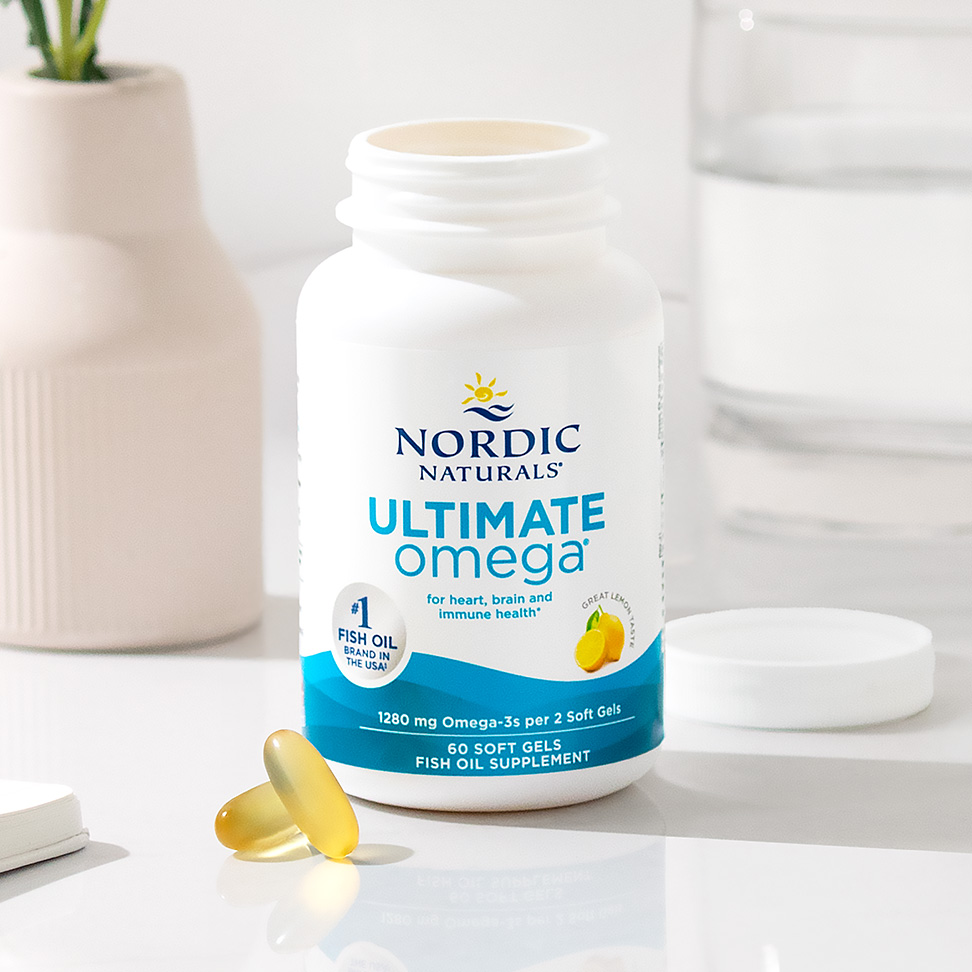
Why Omega-3s
Why Omega-3s

Essential Fats
Why everybody
needs omega-3s
Did you know that the human body is made up of approximately 37 trillion cells, and each one of them contains important omega-3 fatty acids that the body needs to stay healthy and function normally?
It’s true. Evidence from over 30,000 studies conducted on EPA and DHA indicate they play important roles throughout the body as influential structural components of cell membranes. However, the human body can’t produce the essential fats needed to create these important omega-3 fatty acids on its own, which is why we must rely on outside sources like cold-water fish and flaxseed to get the EPA and DHA we need for optimal cellular health and functioning.
Omega-3s
How much is enough?
This is one of the first questions people interested in omega-3s usually ask, and also one of the most difficult to answer. Because there isn’t a universal consensus on EPA and DHA dosage, a recommended daily amount for omega-3s has not been established the way it has for nutrients like vitamin C or calcium. Health experts typically suggest daily intakes based on a person’s stage of life, health status, nutritional profile, and what the research shows. But one thing is true for everyone: omega-3s are foundational to cellular health, and thus fundamental to optimal health across the lifespan.*

Maintenance
Research suggests 500 mg EPA+DHA to reduce the risk of deficiency.
Proactive
A growing body of research suggests between 1000 and 1500 mg EPA+DHA daily for proactive support.
High Intensity
Research suggests more than 1500 mg EPA+DHA daily for high-intensity support.
Manufacturing Standards
Most of the concentrated fish oils on the market today are formulated for cost-savings rather than quality and efficacy. Their manufacturing process is cut short, resulting in omega-3s as ethyl ester molecules—synthetic fats with only about 30 years of history in the human diet.
Not at Nordic Naturals. All of our omega-3 fish oil products are produced in the triglyceride form, which is the form naturally found in fish and the form the body most easily recognizes and absorbs.* Triglyceride-form fish oils require more manufacturing steps, and take longer to produce, but for us, there’s no other way. Our patented oxygen-free manufacturing process allows us to deliver industry-leading purity and freshness levels documented by third-party test results.
Omega-3s
Source Matters
Omega-3 fatty acids come from two main sources: marine sources like cold-water fish and algae, and plant-based sources like flax and green vegetables. People mistakenly think these two sources are equally beneficial, but marine sources are actually far superior. Here’s why.
Flax contains essential fatty acid alpha-linolenic acid (ALA), which can be converted to the two primary fats shown to benefit health, EPA and DHA.
However, even under optimal lifestyle and health conditions, only about 5% of ALA converts to EPA, and just 0.5% converts to DHA. Put in simpler terms, consuming a 10-ounce bag of flax-meal would provide the equivalent amount of EPA+DHA found in a single serving of Nordic Naturals fish oil. In light of the body’s limited ability to convert EPA and DHA from ALA, it is generally recommended that omega-3s be obtained directly from cold-water fish or fish oil.
Since our founding, Nordic Naturals has always been deeply committed to the health of our oceans.
Regulated Fishing
All our fish sourcing complies with the Norwegian fisheries management system
Bycatch Prevention
We use responsible fishing gear to protect against bycatch
Habitat Protection
We use line and net fishing methods that prevent seafloor and ecosystem damage
Marine Pollution Prevention
Our coastal processing facilities are leaders in minimizing pollution and conserving resources
Pacific and Atlantic Anchovies and Sardines Sourced from the South Pacific and Atlantic Oceans
The Right Raw Materials
Nordic Naturals starts with the very best raw material available. Our quality control begins in the ocean with our careful choice of fish species that are naturally low in toxins and high in omega-3 fats.
All our omega-3 products are made exclusively from three types of wild fish. None of the fish we use is endangered, and all are caught from some of the cleanest waters in the world. We respect important fishing regulations when sourcing our raw materials, including quotas, minimum catch sizes, fishing ground closures, and fishing methods.
Responsible Manufacturing
Our business is based on natural resources. We know it’s up to us to use them responsibly. Nordic Naturals manufacturing plant in Arctic Norway is a testament to this belief. It’s powered entirely by unused biofuel that’s a byproduct of the fish oil manufacturing process, with surplus energy provided to neighboring businesses. Cutting-edge technologies allow us to use fewer raw materials to reach desired omega-3 concentration levels. And all the facility’s wastewater is thoroughly cleaned before being sent to the ocean.
